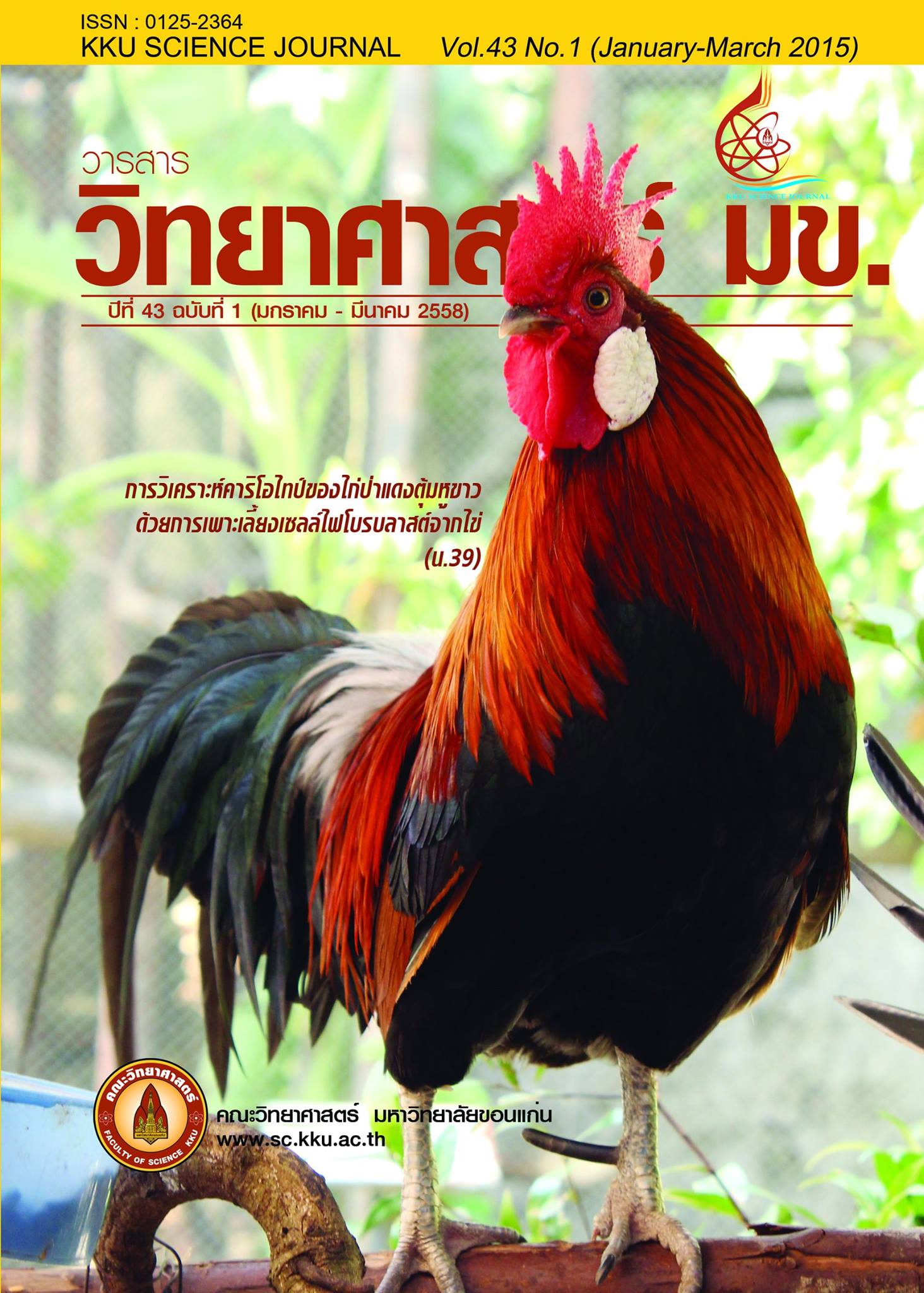Phytochemical and Antibacterial Activity of Jellyfish Curing Extract
Main Article Content
Abstract
Phytochemicals and antibacterial activities of Jellyfish (Rhopilema hispidum) puckery curing, a traditional Thai food in the East of Thailand produced from the folk wisdom by using bark of Peltophorum dasyrachis, were studied comparatively with fresh jellyfish, P. dasyrachis bark water extracted and jellyfish marinade. The result showed that phytochemical components of jellyfish before and after curing were significantly different. By Wagner’s reaction, alkaloid was found only in fresh jellyfish and jellyfish marinade which implies that after curing process, alkaloid may be released from fresh jellyfish to marinade solution. Moreover, there were three
compounds including tannin, flavonoid and phenolic were detected in jellyfish curing, jellyfish marinade and P. dasyrachis bark extracted. These compounds were not detected in fresh jellyfish. This refers to the phytochemicals from P. dasyrachis bark still contained in the jellyfish after preservation. Due to the presentation of phytochemical in jellyfish curing as in P. dasyrachis bark extracted, the jellyfish marinade showed inhibitory activity against Bacillus subtilis, Staphylococcus aureus ATCC25923 and Psuedomonas aeruginosa ATCC27853 whereas this property was not found in the fresh jellyfish.
Article Details

This work is licensed under a Creative Commons Attribution-NonCommercial-NoDerivatives 4.0 International License.


